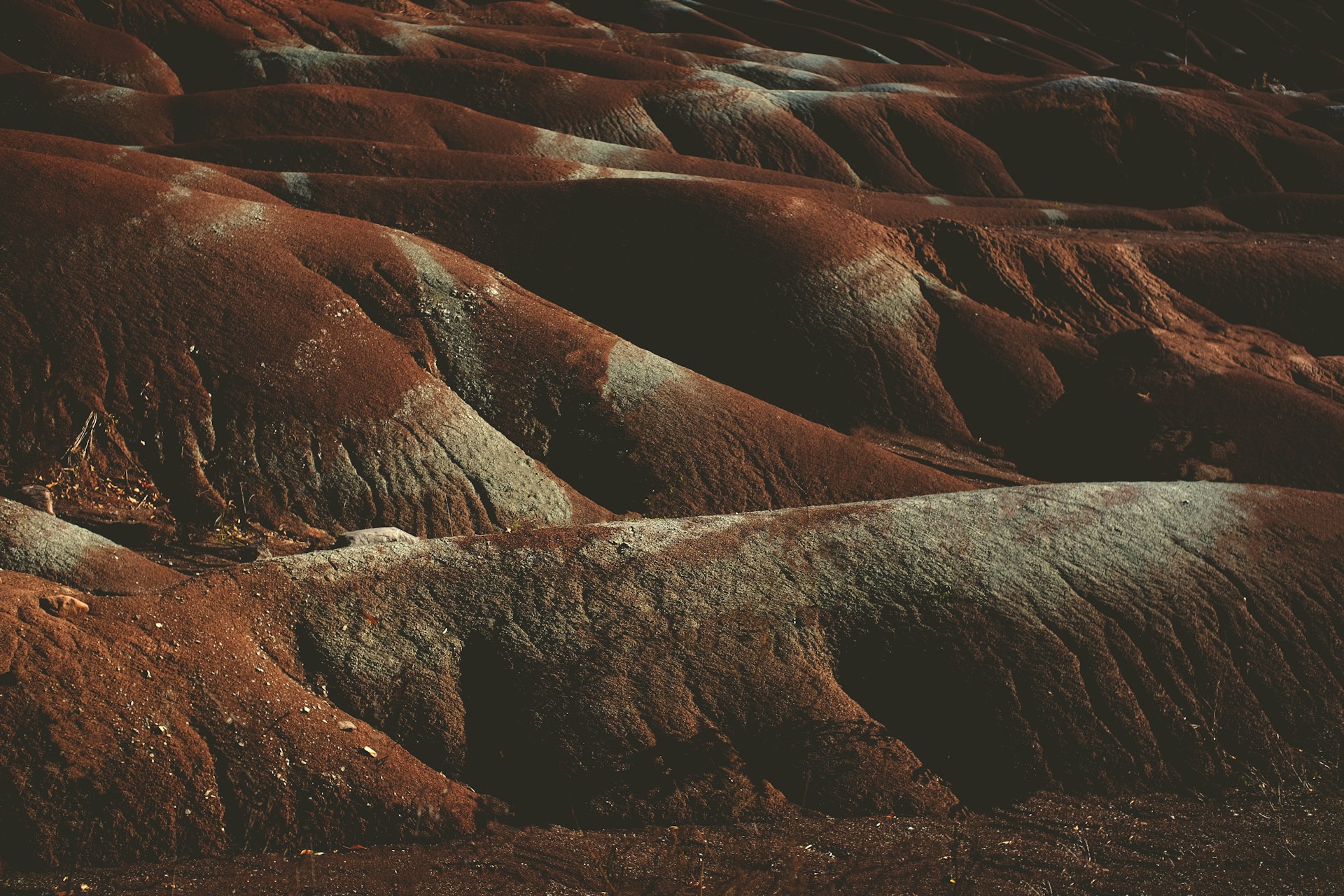

Question: What is the History of the Badlands in Caledon?
Answer: The history of the Badlands in Caledon is a tale of natural forces and human impact. The landscape was created by poor farming practices in the early 1900s. Over-grazing and land clearing caused severe soil erosion, exposing the soft red Queenston Shale, which was then quickly carved by water into its distinctive hills and gullies.
The Story Behind the Cheltenham Badlands
The Caledon area holds a surprising geological treasure. The Cheltenham Badlands present a stunning landscape of rolling red rock hills and deep gullies. This striking scene looks more like the surface of Mars than a typical Southern Ontario view. The unique topography sparks curiosity about its formation. Answering the question “What is the history of the Badlands in Caledon?” reveals a story of ancient geology and recent human impact.
This remarkable landmark did not appear overnight. Its creation spans hundreds of millions of years and involves powerful natural forces. The story also includes the actions of local settlers just over a century ago. Understanding this history helps us appreciate the delicate nature of this environment. It also highlights the importance of the conservation work that protects it today. This place offers a direct link to the deep past and a lesson in environmental stewardship.
Geological Formation of a Martian Landscape
The foundation of the Badlands began around 450 million years ago during the Ordovician period. At that time, a shallow tropical sea covered this part of North America. Rivers flowed into this sea, carrying fine-grained mud and silt. Over millions of years, these sediments settled on the seabed, compressing into a type of rock called shale. This specific formation is known as the Queenston Shale. It forms the bedrock under much of Southern Ontario.
The distinctive red colour of the shale comes from iron oxide, or rust. As the iron deposits in the mud were exposed to oxygen, they oxidized and gave the rock its rich, reddish hue. You may also notice thin grey-green streaks running through the red rock. These lines show where circulating groundwater caused a chemical change in the iron. This change removed the oxygen and altered the shale’s colour. These natural processes created the colourful canvas we see today.
Follow this link to learn more about Caledon realtors
Related Article: What Are Some Good Places to Go Cross-Country Skiing Near Caledon?
Related Article: Where Can I See Fall Colours in Caledon?
A Century of Change and Transformation
The erosion process that formed the Badlands was rapid in geological terms. Within a few decades of the initial land clearing, the distinct landscape began to take shape. By the mid-20th century, the site was no longer suitable for farming. Instead, it had become a local curiosity. People in the Caledon area started to notice the strange, barren hills that were growing where pastures once stood. The land’s appearance was unlike anything else in the region.
It became an informal landmark, attracting visitors who walked directly on the soft shale formations. For many years, the site was private property, but public access was generally tolerated. As word spread, more people came to see the unusual terrain. This period marked a significant shift in the land’s identity. It changed from a failed agricultural plot into a recognized natural point of interest, though its future was uncertain.
Conservation Efforts and Public Access
The growing popularity of the Badlands created a serious problem. The constant foot traffic from thousands of visitors damaged the delicate shale. Every step on the soft rock caused it to crumble, which made erosion happen even faster. The oils and soils from shoes also altered the unique colour of the landscape. The very thing that made the Badlands special was being destroyed by the people who came to admire it. Authorities recognized the site needed protection.
In 2015, officials closed the site to the public to prevent further damage. Several organizations partnered to develop a long-term conservation plan. The Ontario Heritage Trust, the Credit Valley Conservation Authority, and the Bruce Trail Conservancy worked together. They designed a solution that would protect the sensitive environment while allowing people to enjoy the view. Their work resulted in the construction of a beautiful, accessible viewing platform and a new section of trail.
The Badlands Today: A Protected Natural Wonder
Today, the Cheltenham Badlands is a celebrated and protected natural area. Visitors can no longer walk on the red shale hills. Instead, a large, elevated viewing platform provides safe and spectacular views of the entire landscape. This structure allows everyone to appreciate the Badlands without causing harm. A boardwalk connects the platform to the main Bruce Trail, creating an enjoyable and educational visitor experience. The site shows a successful balance between public access and environmental preservation.
The Badlands is officially recognized as a provincially significant Earth Science Area of Natural and Scientific Interest (ANSI). This designation acknowledges its importance for scientific research and education. The strict rules, like staying on the trail and platform, are essential for its survival. By respecting these guidelines, every visitor plays a role in protecting this fragile piece of Ontario’s geological history for future generations to study and admire.
Planning Your Visit to the Caledon Badlands
A trip to the Cheltenham Badlands offers a unique opportunity to witness a rare landscape. To ensure a smooth and enjoyable visit, some planning is necessary. The site is managed by Credit Valley Conservation, and access is controlled to manage visitor numbers and protect the area. You must now make a reservation online before you visit. This system helps prevent overcrowding and reduces the human impact on the surrounding nature preserve.
Parking is limited and only available with a confirmed booking. The site is open seasonally, so check the official CVC website for current hours and availability. Remember that the Badlands is a sensitive environment. Following a few simple rules helps protect it.
-
Book in Advance
Reservations are mandatory. You cannot enter without a pre-booked time slot, so plan your trip ahead of time. -
Stay on the Trail
Use only the designated viewing platform and trails. Walking on the Badlands surface is strictly prohibited. -
Leave No Trace
Pack out everything you bring in. Help keep the area clean and natural for wildlife and other visitors.
Conclusion
The history of the Badlands in Caledon is a powerful story written on the land itself. It begins in an ancient sea millions of years ago. The story continues with the actions of farmers a century past. Now, it is a narrative of community-led conservation. This incredible landscape is a testament to both the power of nature and the responsibility we have to protect it. The red shale hills show us a fragile beauty, one that requires our care and respect to survive.
Living in the Caledon region means having access to such incredible natural heritage. The Cheltenham Badlands is more than just a place to visit; it is a part of the local identity. It serves as a reminder of the dynamic relationship between people and the environment. The successful preservation of this site shows a commitment to maintaining the natural appeal of the area. This commitment makes Caledon a special place to call home, where history and nature are valued neighbours. [ 1 ]
References
1. https://www.heritagetrust.on.ca/properties/cheltenham-badlands


